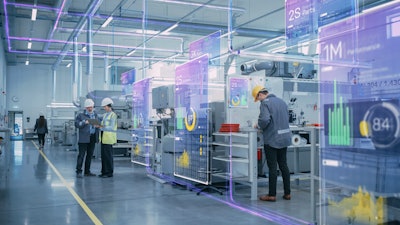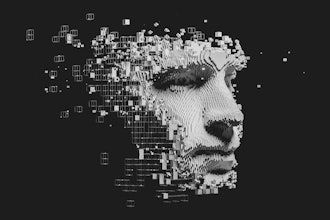
As companies everywhere implement AI into their tech stacks, the fear of becoming obsolete (FOBO) is a growing concern for U.S. workers. According to a new Gallup report, nearly 1 in 4 U.S. workers worry technology will make their jobs obsolete. However, for industries with an aging workforce, like manufacturing, AI helps major players maintain decades of experience and institutional knowledge.
The opportunity to work alongside tech also attracts the next generation of workers who see the industry in a new light - innovative, safe, more sustainable, and critical. The future of how we leverage technology in the workplace is bright, but only if we're all working towards the same goal.
AI As a Friend
AI is the center of workplace anxieties for many workers - and it's understandable. They worry that advanced technologies, which can perform tasks faster than humans, will replace human talent. However, there's no need to panic. We're not yet in a place where AI can function independently - humans must be there to provide strategic guidelines, problem solve, bridge the gaps, fact check, and even finish the tasks that the technology cannot.
It's essential that workers in manufacturing and beyond come to terms with their anxieties surrounding AI because it's not going anywhere. According to Augury's recent State of Production Health 2023 report, 63 percent of manufacturing leaders plan to increase their AI budgets within the next year. This should come as good news to leaders in manufacturing currently grappling with widespread labor shortages. AI can augment their workers' abilities and fill gaps. For workers interacting with the technology on factory floors, this brings endless opportunities for advancement.
Innovative technologies, like AI, are entering the workforce and enacting positive change for workers by empowering productivity and efficiency, creating invaluable digital skills, reducing workloads, etc. These AI benefits are invaluable for employers, too, as knowledge transfer (33 percent), rising labor costs (32 percent), and the need for reskilling (30 percent) are the top three workforce issues manufacturing leaders identified in the report.
In The Workplace
AI will reimagine existing roles in incredible ways and drive a new-found interconnectedness of humans and machines. Soon enough, employers will pair all employees with AI partners, better known as AI co-pilots. These co-pilots will completely change how we work - providing safer, more efficient work environments.
While the way these co-pilots will join their human counterparts will be different across industries, they will all have the same goal. The technology will free desk workers from menial tasks and equip workers on factory floors with the ability to make more strategic decisions faster. These changes will allow workers to focus on other tasks that require human-level intelligence, problem-solving, and creativity.
Manufacturers must consider how AI completely reshapes their staffing strategies for the better. AI helps manufacturers increase sustainability and creates more tech-centric roles on factory floors, which helps attract young, diverse, mission-focused workers. As for an industry that's often dismissed as an outdated laggard, this is an incredible perk. And it's only possible with the power of AI.
However, to make the most out of their investments, industrial organizations should focus on adopting easy-to-use tech applications. Intuitive tech will resonate with generations of workers without scaring them away.
The FOBO is not a fear that will disappear overnight, but while the public's worries around AI continue to grow as technology advances, technology leaders must take action to remove these feelings of unease. This pioneering technology can up-level all industries in a way we never imagined. As we continue to see increased advancements and innovation, it's an exciting time for the workforce. The time is now to learn, embrace, and let technology do its job: making yours more manageable.





















